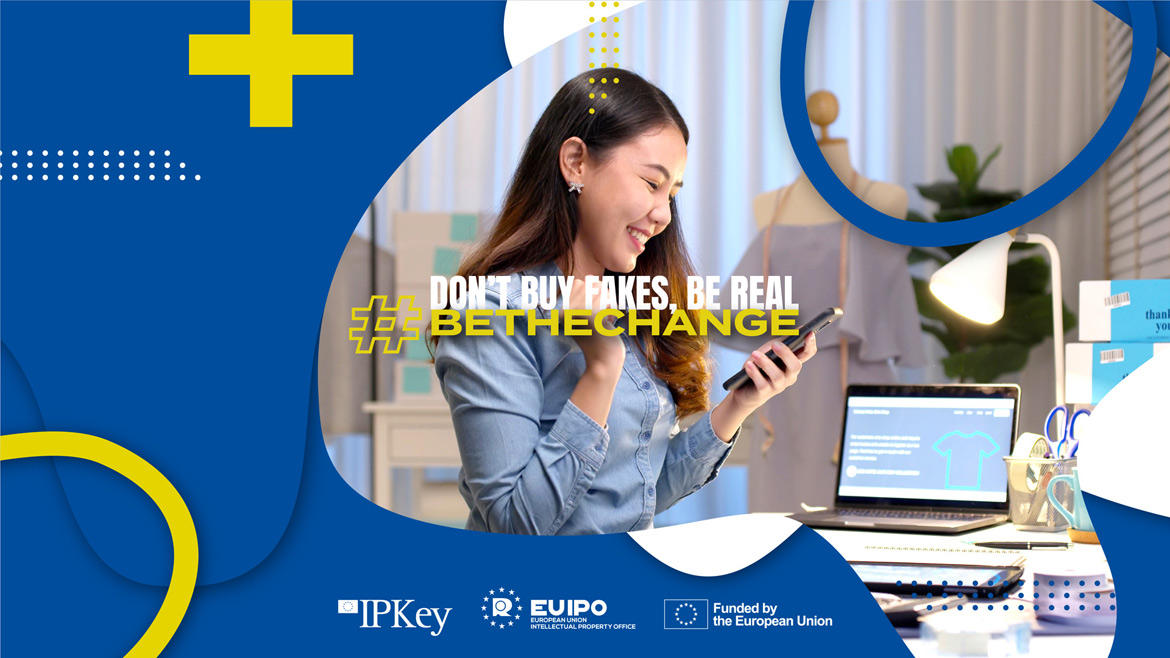#BETHECHANGE
English - Bahasa Indonesian - Bahasa Malaysian
What do electronics, fashion, beauty and luxury products, sports goods, films, software, games and toys all have in common? Counterfeit and pirated versions of them all are being sold more than ever. Consumers, creators and businesses all suffer, so what can you do?
Consumers have the power to fight back by choosing to support creativity and prioritise quality. Don’t buy fakes, be real. #BETHECHANGE
The internet, smartphones and the growth of e-commerce have given birth to all kinds of positive trends. Increased sales have been welcomed by retailers whilst 24/7 access to favourite online stores and brands is now enjoyed by consumers. They have however also led to a huge growth in the proliferation of counterfeit goods and the illicit reproduction of digital content around the world, including South-East Asia, where several countries are among the principal provenance economies for counterfeit goods purchased online. The scale of the problem was highlighted in an OECD-EUIPO report, which showed in 2021 how the trade in counterfeit goods and pirated digital content had risen to 3.3% of world trade. Proper protection and enforcement of intellectual property rights (IPRs) hold the answer to reversing this worrying phenomenon, but so too does understanding its causes and raising awareness about its effects and threats.
This marked increase in IPR infringement has been facilitated in particular by the emergence of digital technologies that have allowed the low-cost yet relatively high-quality manufacture of goods in huge numbers. In the EU alone for example, it is estimated that around EUR 8 billion of its GDP is lost each year because of counterfeiting and piracy. Incentives for protecting IPRs abound as society at large and ultimately citizens ‘living standards are negatively affected. After all, a shrinking of legal and taxable business and trade results in less government revenue for public services such as education and health care. In South-East Asia, the impacts of this global trend can be felt too and this is because of several important factors.
An efficient and effectively enforced intellectual property infrastructure is necessary to ensure investment in innovation is not put off in the region for fear of fakes and to avoid commercial-scale IPR infringements that result in economic harm. Beyond big-name brands, the SMEs that make up local economies are also damaged. Defending their designs, trade marks or copyrights is all the more difficult as they often lack the in-house legal expertise to challenge infringements making the need for effective enforcement from authorities even more apparent.
A lack of awareness among consumers concerning the risks involved is also responsible for the rise in infringements. COVID-19 has hastened many nascent developments triggering new consumer habits and behaviours that have complicated the task of tracking and stopping the dissemination of counterfeit products. Lockdowns and working from home saw consumers turn increasingly to online deliveries. The enormous increase in small packages delivered by couriers has made the task of checking them all impossible for the authorities responsible. These conditions created the perfect environment for non-regulated sellers who rather than use big shipments conduct their trafficking of fake goods in small parcels. As an indication of the scale of the problem, the European Commission’s report on the EU customs enforcement of intellectual property rights indicated that courier and postal traffic accounted for 84% of all detentions of counterfeit goods generally in the EU.
Innovation and creativity are the cornerstones of modern economies and counterfeit goods and pirated content siphon off revenue that should justly have been earned by the rightful owners. Allowing fakes to flourish stymies innovation allowing neighbouring economies to gain a competitive edge. But it is not just the owners of intellectual property rights who suffer from infringements. Fake goods tend to be of lesser quality, meaning consumers lose out too. Content infringements can also make it unprofitable for content creators to continue producing new material, therefore reducing the offer of content online.
Beyond issues of quality and choice, health risks are also a real concern. Take for example fake cosmetics. With the industry valued at over $500 billion globally and rising, the sector is clearly booming and many legitimate companies have won the trust of consumers who are happy to fund looking after their personal image by paying for certain brands. But, would so many consumers be as willing to pay this money if they were aware they are not always getting the real product but instead a counterfeit version? What about if the true cost of some products was not only financial and their very health or wellbeing had to pick up the bill?
Counterfeit cosmetics and beauty products seek to benefit from well-known brands, whose trade marks have been registered according to intellectual property laws. This can be achieved by imitating the logo or brand name, as well as packaging, in order to deceive consumers. But the differences don’t stop there. These products, which do not undergo the same process of regulation that legitimate products do to ensure compliance with safety and product standards, can be substandard and even contain harmful substances. Consumers can innocently purchase certain products in an attempt to protect their skin for example, but in fact, they can cause themselves permanent damage.
Citizens and consumers can play a part in fighting counterfeits and content infringements. Basic steps such as checking the origin of products or looking for stamps of authorities help, as does greater awareness of their existence. When supporting the work of your favourite artists and content creators, make sure you are following their official accounts and try to avoid sharing content if you are unsure of its origin and authenticity.
Let’s keep supporting big, bright and bold ideas. Don’t buy fakes, be real. #BETHECHANGE
(Misuse of E-Commerce for Trade in Counterfeits’ prepared by the OECD jointly with the European Union Intellectual Property Office (EUIPO) in 2021)
(Global Trade in Fakes’ prepared by the OECD jointly with the European Union Intellectual Property Office (EUIPO) in 2021)

